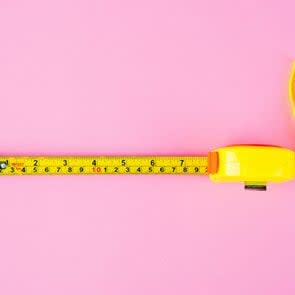What Is Daylight Saving Time and Why Do We Have It?
Spring forward!
New Englanders (and Midwesterners, and some Southerners) and all others toughing out the long, frozen months on Eastern Standard Time (and on Central, Mountain, and even Pacific Standard Time…OK, most of us!) have an annual countdown to the second Sunday in March: It’s the official start of daylight saving time, or DST. These poor chilled souls will enjoy an extra hour of daylight in the evening as the gradual orbit of the Earth tilts us toward the sun and the days get longer, reaching their peak with the summer solstice. In Europe, DST is known as “summer time,” and the lost hour of sleep is a sacrifice many are willing to make for an extra hour of daylight. And we will get that hour of sleep back, of course, when daylight saving time comes to an end late next fall. But it wasn’t always this way, and it still isn’t for much of the world: Only about 40% of countries worldwide observe DST. So why do we?
When is daylight saving time?
In the United States, daylight saving time runs from the second Sunday in March (spring forward on Sunday, March 13, 2022) to the first Sunday in November (fall back on Sunday, November 6, 2022). DST happens just before the spring equinox, which marks the start of spring in many cultures, although the official first day of spring is March 1. Clocks change at 2 a.m., a time chosen both to avoid falling back into the previous day and to minimize disruption for early shift workers.
Thankfully, as many of us rely on our electronic devices for timekeeping now, the chances of being late because you forgot to turn your clocks back or change your alarm are minimized; cell phones and computers automatically update the time change. You’ll wake up with your alarm on March 15 as though nothing happened, except for that unplaceable groggy feeling that comes from losing an hour of sleep. (Maybe go to bed a little earlier on March 12.) From then on, it’s longer, warmer evenings through summer and until just a couple of weeks after the autumn equinox, when the cold winds of fall return to blow our clocks back one hour and we can resume our daily complaint as it starts to get dark before 5 p.m.
But what is daylight saving time?
Well, first of all, note that it’s daylight saving, not “savings” as it is commonly pronounced. As the name suggests, it’s a practice designed to make better use of the varying daylight hours as the Earth orbits the sun. The tilt of the Earth means that different hemispheres are tilted toward (summer) and away (winter) from the sun’s warmth at different times of year (at different points in the Earth’s orbit). This gives us our Northern Hemisphere seasons (and reverses them in the Southern Hemisphere).
The differences in daylight hours are most extreme nearest to the poles, which is why most countries near the equator do not observe daylight saving time, but New Zealand and Sweden do, enjoying summer sunlight almost until midnight at their southernmost and northernmost points respectively. By moving the clocks forward an hour in sun-rich summer, it is hoped that the majority of the day will be lived under full daylight hours.
Why do we have daylight saving time?
There are several stories about the origins of the DST concept. You might have heard that the idea stemmed from Benjamin Franklin, but that’s not strictly true. He did write a satirical letter to The Journal of Paris (where he was living in 1784) suggesting that the city would save 64,050,000 pounds of candle wax burned if only its citizens would rise with the sun, but it also included a recommendation that they get the people on schedule by firing cannons in every street as a city-wide alarm clock. We’re grateful for Franklin’s other inventions but glad that this particular one did not catch on.
The core idea may have been there, but daylight saving time made no progress for more than another century. In 1907, a British builder named William Willett lobbied Parliament to change the time in April and September to take advantage of the longer summer daylight hours but got nowhere. The first city to implement DST was Thunder Bay, Canada in 1908 as a way to preserve daylight hours in the winter months. The first country to implement daylight saving time was Germany, in 1916. Looking to save money on energy costs during World War I, they launched a daylight saving practice that was followed by most of Europe, and finally by the United States, in 1918.
So that’s why we have daylight saving time?
Not exactly! In the U.S., the DST federal law was repealed after the war, and then resurrected during World War II, again with the intent of saving money on energy costs. Daylight saving time was made optional after the war, which led to absolute chaos when traveling. A 35-mile bus journey from Moundsville, West Virginia to Steubenville, Ohio meant going through seven different time changes, and even the Twin Cities weren’t time twins: In 1965, Minneapolis and St. Paul, Minnesota showed different times on their clocks.
In 1966, the federal government passed the Uniform Time Act, standardizing DST for the six months from April to October. It was extended to seven months in 1986, and finally to eight months in 2005, leaving us with the March-November DST we enjoy and/or resent today. Unless you live in Arizona or Hawaiʻi, that is. Those states are the only two in the Union not to observe daylight saving time (excepting the Navajo Nation, in northeastern Arizona). But then again, both those states get plenty of sunshine year-round and don’t need to hoard it.
Is daylight saving time really necessary?
Not according to most of the world. Despite having various celebrations to herald the start of spring, most of Africa and Asia don’t observe DST, and neither does Russia despite its northerly latitude. Even in Australia, two states and the Northern Territory do not change their clocks. But daylight saving time may soon need saving itself if it wants to stick around. Studies have shown that as energy efficiency in lighting has improved, DST doesn’t actually save money, and may even increase energy spending as many people prefer to spend their warm summer evenings indoors next to the energy-guzzling air conditioner.
In 2018, the European Union dropped its DST requirement for member countries, and here in the U.S., various states from Maine and Florida to Colorado and Texas have introduced bills to abolish DST. Part of the debate, however, is whether or not states and countries should adopt permanent DST, or permanent standard time. Darker winter mornings, or afternoons? Longer summer evenings, or pre-dawn light? Maybe it comes down to a debate between early birds and night owls. Either way, we are all looking forward to spring.
Daylight saving time facts
The U.S. Law Enforcement Assistance Administration found that crime has consistently dropped during DST by 10 to 13 percent, probably due to the extra hours of sunlight. However, reported workplace injuries also increase by 5.7 percent during daylight saving, and heart attacks rise by as much as 24 percent on the Monday following the annual spring forward. Both are attributed to a lack of adequate sleep. Seriously, go to bed early on March 12 this year!
When DST was increased to its current eight-month period in 2005, lobbyists from various industries were overjoyed. The candy industry, in particular, had been pushing for an extension of DST since the 1980s. Their thinking was that an extra hour of sunlight on Halloween allowed kids to collect more candy, and thus would make candy sales rise.
Other industries have also benefited from increased daylight hours over the years. In 1986, the golf industry reported that the extra month brought in an additional $200 million in sales of golf clubs and greens fees, while the barbecue industry found it to be worth an extra $100 million. That’s a lot of grill sales!
Watch out for your pets being…more demanding than usual on March 13. Many animals are accustomed to being fed at a regular hour, and the time change might cause them some confusion (or just to come and wake you up, shortening your sleep even more. Remember, early bedtime March 12!). Some animals, such as cows, have to be milked at the same time each morning for their health and comfort. That requirement goes some way to explaining why farmers have been so opposed to DST from the beginning.
Next, find out what would happen if we got rid of daylight saving time.
Sources:
TimeandDate.com: “Daylight Saving Time Statistics”
The Old Farmer’s Almanac: “FIRST DAY OF SPRING 2021: THE SPRING EQUINOX”
Sleep.org: “Why Do We Spring Forward, but Fall Back?”
LiveScience.com: “Daylight Saving Time”
WebExhibits.org: “Benjamin Franklin’s Essay on Daylight Saving”
The New York Times: “E.U. Will Let Countries Decide Whether to Use Daylight Saving”
Michael Downing, author of Spring Forward: The Annual Madness of Daylight Saving Time
Quotes to Celebrate Spring
Why We Don't Use the Metric System
Quotes That Capture Fall's Beauty
The post What Is Daylight Saving Time and Why Do We Have It? appeared first on Reader's Digest.



